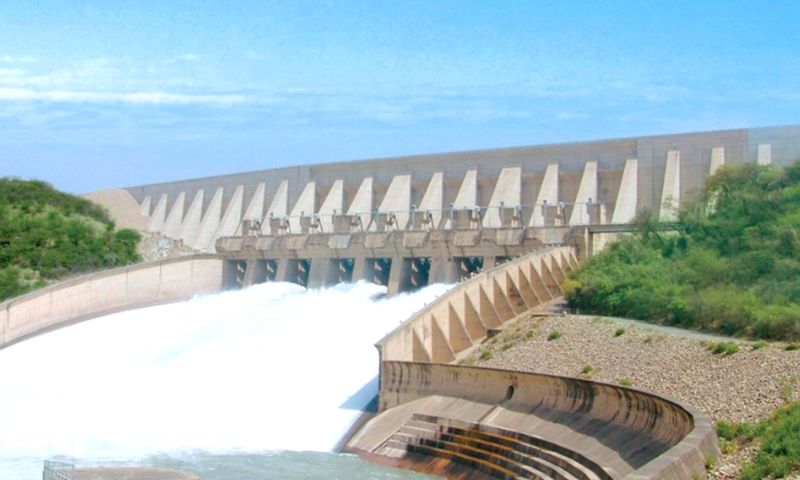MIRPUR: Pakistan’s second-largest water reservoir Mangla Dam was constantly found drying as intermittent snowfall on various parts of the Himalayan peaks constantly kept them snowclad, leading to a decline in water flow into the rivers falling in the dam.
Mangla Dam in the Mirpur district of Azad Jammu and Kashmir (AJK) had a reported water level of 1100.90 feet on Tuesday, with a maximum conservation level of 1242 feet and a live storage capacity of 0.406 MAF in the reservoir.
The sources highlighted that on February 24, 2023, the reservoir’s water level was reported to be 1114.75 feet, compared to the maximum conservation level of 1242 feet.
Outflow and inflow
Meanwhile, the outflow and inflow at River Indus at Tarbela remained at 43000 and 22300 cusecs, 14100 and 14100 cusecs at Khairabad Bridge, River Kabul at 9300 and 9300 cusecs, Jhelum at Mangla 28000 and 20100 cusecs and Chenab at Marala 3000 and 9600 cusecs, respectively.
Similarly, the inflow and outflow, respectively, at Guddu 36800 and 32600 cusecs, Jinnah Barrage were recorded as 43300 and 38300 cusecs, Chashma 39100 and 45000 cusecs, Taunsa 49200 and 37800 cusecs, Sukkur 29000 and 7000 cusecs, Kotri 7600 and nil cusecs, Trimmu 2200 and nil cusecs and Panjnad 3700 and nil cusecs.
At Tarbela, the minimum operating level is 1398 feet, the present level is 1431.95 feet; the maximum conservation level is 1550 feet; live storage today is 0.611 million acre-feet (MAF); Chashma; the minimum operating level is 638.15 feet, present level 641.20 feet, maximum conservation level 649 feet, live storage today 0.044 MAF; at Mangla, the minimum operating level is 1050 feet, the present level is 1100.90 feet, maximum conservation level 1242 feet, live storage today 0.406 MAF.
The inflows and outflows of River Indus at Chashma, Tarbela, and Jinnah, River Kabul at Nowshera, and River Jhelum at Mangla have been reflected as mean flows of 24 hours. In contrast, the other flows were gauged at 6.00 am on Tuesday. —APP

























